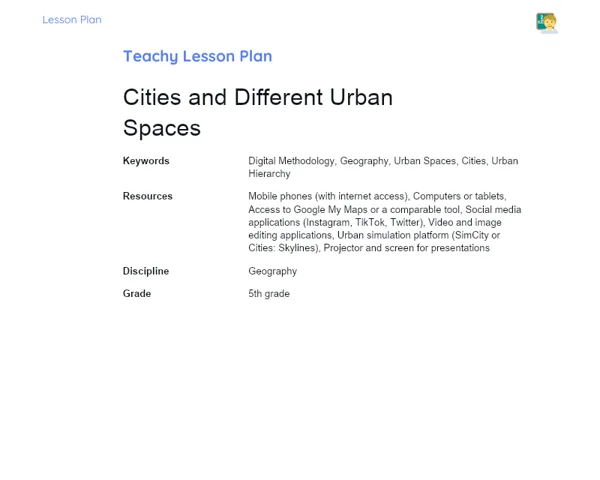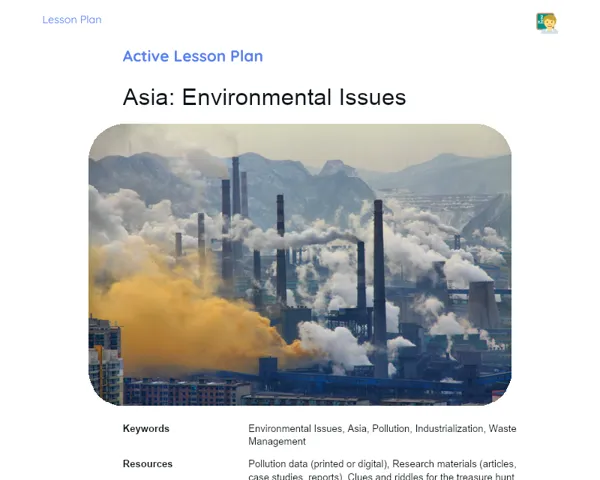Lesson Plan Teknis | Taylorism and Fordism
| Palavras Chave | Taylorism, Fordism, Industrial Production, Assembly Line, Scientific Management, Efficiency, Productivity, Division of Labor, Automotive Industry, Just-in-Time, Teamwork, Problem-Solving |
| Materiais Necessários | Short video on Ford's assembly line in the 1920s, Computer and projector for video display, Paper, Scissors, Glue, Other materials for making origami or small cardboard products, Whiteboard and markers |
Objective
Duration: 10 - 15 minutes
The aim of this lesson plan is to equip students with a solid understanding of Taylorist and Fordist production models. This understanding is crucial for them to appreciate the historical and practical significance of these models in modern industry. By linking these concepts to the current job market, students will also develop practical skills that are essential for their future careers.
Objective Utama:
1. Identify the key aspects of Taylorism and Fordism.
2. Understand how these production models influenced the industrial landscape.
3. Examine the implications of these models on work organization and the wider economy.
Objective Sampingan:
- Connect production models to contemporary examples in various industries.
- Foster teamwork skills to tackle practical challenges.
Introduction
Duration: 10 - 15 minutes
Purpose: The goal of this lesson plan segment is to ensure students grasp the fundamental principles of Taylorist and Fordist production models. This understanding is vital for them to acknowledge the historical and practical importance of these models in today’s industry. Moreover, by tying these concepts to current job scenarios, students will cultivate vital and relevant skills for their future professional pathways.
Curiosities and Market Connection
Curiosities and Market Connection: Did you know that Ford's assembly line strategy made mass production of automobiles possible, which significantly lowered costs and cut down production time? Today, many factories incorporate principles of Taylorism and Fordism to streamline operations. Brands like Toyota have refined these models to create the Just-in-Time production system, which is prevalent in the automotive industry and beyond.
Contextualization
Contextualization: The production models of Taylorism and Fordism were pivotal in shaping modern industry. They not only boosted the efficiency and productivity of factories but also radically changed how work is organised and executed. From Henry Ford's assembly line innovations to Frederick Taylor's scientific management techniques, these models have left a lasting mark on the global economy and continue to influence a variety of industries today.
Initial Activity
Initial Activity: To engage students right from the start, show a brief 5-minute video highlighting Ford's assembly line in the 1920s and its revolutionary impact on industrial production. Then pose the following thought-provoking question: 'How do you think the introduction of these techniques transformed workers' lives during that era?' Encourage students to reflect and discuss their thoughts in small groups.
Development
Duration: 60 - 65 minutes
The purpose of this lesson segment is to deepen students' understanding of Taylorist and Fordist production models in a practical context. Through engaging activities and reflective discussions, students will enhance their teamwork, problem-solving, and critical thinking skills, which are applicable both academically and professionally.
Topics
1. History and principles of Taylorism
2. History and principles of Fordism
3. Effects of Taylorism and Fordism on industrial production
4. Comparison of Taylorism and Fordism
5. Modern applications of these production models
Thoughts on the Subject
Encourage students to contemplate how the Taylorist and Fordist production models reshaped work organisation and the global economy. Ask: 'In what ways did these models alter people's work and lives? What were the benefits and drawbacks of these changes?'
Mini Challenge
Assembly Line in the Classroom
Students will split into groups and simulate an assembly line to produce a simple item, like origami or small cardboard crafts. The objective of this activity is to experience the efficiency and role division synonymous with Taylorism and Fordism.
1. Divide students into groups of 5 to 6 members.
2. Provide necessary materials for production (paper, scissors, glue, etc.).
3. Guide each group to assign specific roles for each participant, such as cutting, folding, gluing, and so on.
4. Set a time limit of 20 minutes for each group to create as many items as possible.
5. After the activity, each group will present their outcomes and discuss the challenges they encountered and how they addressed efficiency issues.
Gain an understanding of task division and specialization through hands-on experience, while reflecting on the challenges and advantages of these production models.
**Duration: 30 - 35 minutes
Evaluation Exercises
1. Identify two main characteristics of Taylorism and two of Fordism.
2. Discuss how Henry Ford's assembly line represented a leap forward from earlier production methods.
3. Provide examples of modern industries that still reflect Taylorism and Fordism principles.
4. Contrast the social impacts of Taylorism and Fordism on workers during their time.
Conclusion
Duration: (15 - 20 minutes)
The goal of this stage is to reinforce the knowledge students have gained, ensuring they appreciate the significance of Taylorist and Fordist production models. The recap and final discussions enable students to link theory with practice and grasp the importance of these models in today’s industrial landscape, preparing them for future academic and career challenges.
Discussion
Encourage an open discussion with students about the key takeaways from the lesson. Ask: 'In what ways have Taylorist and Fordist production models impacted the industrial practices of today?' Get students to reflect on the difficulties faced during the assembly line mini-challenge and draw parallels to real-world industry challenges. Discuss how the application of these models can be observed in contemporary businesses and what adaptations have been made over the years.
Summary
Summary: Summarize the key concepts covered in the lesson, stressing the importance of Taylorism and Fordism in the evolution of industrial production. Highlight how Taylor's scientific management and Ford's assembly line techniques revolutionized efficiency and productivity in factories, with ongoing implications for modern industries.
Closing
Inform students that the theoretical and practical aspects covered during this lesson are foundational for understanding the progression of production processes and their relevance in the job market. Point out how this topic is particularly important for those interested in careers in fields like engineering, management, and economics, where efficiency and process oversight are paramount.


